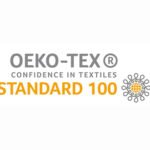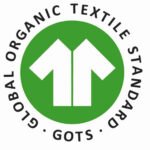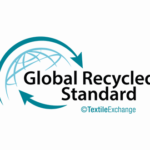CUSTOM SPORTSWEAR
Elevate Your Brand with Vacodo:
Your Premier Sportswear Partner

As a leading sportswear manufacturer, we set ourselves apart as the premier choice for discerning businesses seeking unmatched flexibility, control, and comfort in their products. Our dedication to excellence shines through our meticulous material development process, ensuring superior quality and satisfaction.
We pride ourselves on being more than just a manufacturer; we are partners in your success. Whether you're launching a new business or expanding your brand, we are committed to helping you realize your vision. By closely collaborating with clients and companies, we leverage their ideas and aspirations to create authentic and enhanced product lines. Together, we propel brands forward, turning dreams into tangible success stories. Trust Vacodo to elevate your brand to new heights.
We pride ourselves on being more than just a manufacturer; we are partners in your success. Whether you're launching a new business or expanding your brand, we are committed to helping you realize your vision. By closely collaborating with clients and companies, we leverage their ideas and aspirations to create authentic and enhanced product lines. Together, we propel brands forward, turning dreams into tangible success stories. Trust Vacodo to elevate your brand to new heights.
materials of custom sportswear

Polyester:
Lightweight, breathable, and moisture-wicking, making it ideal for most types of sportswear.
Nylon:
Durable and abrasion-resistant, often used in activewear for its strength and elasticity.
Spandex/Lycra:
Provides stretch and flexibility, enhancing comfort and mobility in sportswear.
Cotton:
Natural, breathable fabric suitable for casual or low-intensity activities.
Polyester blends:
Combining polyester with other fibers like cotton or spandex to improve comfort, durability, and moisture-wicking properties.
Mesh:
Highly breathable fabric, commonly used in areas that require ventilation, such as underarms or back panels.
Moisture-wicking fabrics:
Designed to pull sweat away from the body, keeping the wearer dry and comfortable during intense workouts.
Compression fabrics:
Engineered to provide targeted compression, improve blood circulation, and reduce muscle fatigue.
Fleece:
Insulating fabric used in cold-weather sportswear to provide warmth and comfort.
Gore-Tex:
Waterproof and breathable fabric often used in outerwear for activities in wet or snowy conditions.
Bamboo:
Eco-friendly and naturally antibacterial fabric, known for its softness and moisture-wicking properties.
Merino wool:
Naturally breathable and odor-resistant fabric, suitable for both cold and warm weather activities.
Thermal fabrics:
Insulating materials used in base layers or outerwear to retain body heat in cold conditions.
Reflective fabrics:
Incorporating reflective elements for enhanced visibility and safety during low-light conditions.
Cooling fabrics:
Innovative materials designed to regulate body temperature and keep the wearer cool during intense workouts.
Recycled fabrics:
Environmentally friendly materials made from recycled plastic bottles or other sources, reducing environmental impact.
TYPES OF CUSTOM SPORTSWEAR

Yoga Tops
Breathable and stretchy tops designed specifically for yoga practice, providing freedom of movement and comfort throughout each pose.

Athletic Shorts
Lightweight and moisture-wicking shorts for activities like basketball, tennis, or jogging.

bermuda shorts
Classic knee-length shorts, perfect for casual wear or outdoor activities with a stylish yet relaxed vibe.
HOW TO CUSTOMIZE YOUR SPORTSWEAR
4 steps to customize your sportswear

1. Send your inquiry
Tell us your ideas or send product pictures, URLs, design drawings, etc. We’ll confirm with you lingerie styles, colors, sizes, fabrics, accessories, and so forth in detail.
2. Develop lingerie samples
Make the sample and send it to you. You can evaluate the lingerie quality and overall effect. Tell us your suggestions. Then, we modify it.
3. Start mass production
Place an order once you approve the sample. Then, we go to mass production and production follow-up.
4. Carry out QC before shipping
Conduct AQL sampling or one-by-one inspection before your items are shipped to your place as negotiated.
MANUFACTURING PROCESS OF CUSTOM SPORTSWEAR

Design and Conceptualization:
The process begins with conceptualizing the design of the sportswear, considering factors like functionality, style, and target market preferences. Designers may use computer-aided design (CAD) software to create detailed sketches and specifications.
Material Sourcing:
Once the design is finalized, the next step is to source the appropriate materials. Manufacturers select fabrics and other materials based on factors such as performance attributes, cost, and availability. This may involve working with textile suppliers or wholesalers to procure the necessary materials.
Pattern Making and Cutting:
After obtaining the materials, patterns are created based on the design specifications. Skilled pattern makers use specialized software or manual techniques to develop patterns for each size and style of garment. Once the patterns are finalized, the fabric is laid out and cut according to the patterns.
Sewing and Assembly:
The cut pieces of fabric are then sewn together to assemble the garment. This stage involves various sewing techniques and machinery to stitch together seams, attach zippers, add elastic bands, and incorporate other design elements. Quality control checks are performed throughout the sewing process to ensure accuracy and consistency.
Embroidery and Printing:
If the sportswear requires logos, graphics, or other embellishments, embroidery or printing techniques may be used to apply these details onto the fabric. This stage adds branding and visual appeal to the garments.
Finishing Touches:
After the garments are assembled and decorated, any necessary finishing touches are made. This may include trimming loose threads, pressing the garments to remove wrinkles, and applying any additional features such as reflective strips or adjustable straps.
Quality Control:
Quality control is an essential aspect of the manufacturing process. Inspectors carefully examine each garment to ensure it meets the specified quality standards, including proper sizing, stitching, color consistency, and overall appearance.
Packaging and Labeling:
Once the garments pass quality control inspections, they are packaged and labeled for shipment. Packaging may vary depending on the distribution channel, with individual garments packaged for retail sale or bulk packaging for wholesale orders.
Shipping and Distribution:
The finished sportswear products are then shipped to distribution centers, warehouses, or directly to retailers. Manufacturers coordinate with logistics providers to ensure timely delivery of the products to their intended destinations.
Feedback and Improvement:
Finally, manufacturers gather feedback from customers, retailers, and internal teams to evaluate the performance of the sportswear and identify areas for improvement. This feedback informs future design iterations and manufacturing processes, allowing manufacturers to continually enhance their products.
Inspection of Custom Sportswear

The inspection process of sportswear is crucial to ensure that the garments meet the required quality standards before they are shipped to customers or retailers. Here's an overview of the typical inspection process:
Incoming Material Inspection:
The inspection process often begins with checking the quality of incoming materials, including fabrics, trims, and accessories. Inspectors examine the materials for defects, such as tears, stains, color discrepancies, or irregularities in texture.
Initial Production Inspection (IPI):
During the production process, inspectors conduct initial inspections to assess the quality of the first samples produced. They check for adherence to design specifications, proper stitching, accurate sizing, and any initial defects that may arise.
In-Process Inspection:
Throughout the manufacturing process, inspectors may perform in-process inspections at various stages to identify and address any issues promptly. This helps prevent defects from accumulating and ensures that corrective actions can be taken in a timely manner.
Mid-Production Inspection (MPI):
Mid-production inspections are conducted when a significant portion of the production run is completed. Inspectors assess the overall quality of the garments, including construction, stitching, alignment of patterns or graphics, and any other specific criteria outlined in the quality standards.
Final Random Inspection (FRI):
The final random inspection is carried out when the production is complete and the garments are ready for packaging. Inspectors randomly select samples from the finished goods and thoroughly examine them according to predetermined criteria. This includes checking for defects, proper sizing, color consistency, labeling accuracy, and overall appearance.
Functionality Testing:
Depending on the type of sportswear, functionality testing may be conducted to ensure that the garments perform as intended during physical activities. This may involve testing the stretch, moisture-wicking properties, durability, and other performance attributes of the fabric and construction.
Packaging Inspection:
In addition to inspecting the garments themselves, inspectors also check the packaging materials and labeling for accuracy and compliance with regulatory requirements. This includes verifying barcode information, care instructions, and any other labeling or branding elements.
Documentation and Reporting:
Throughout the inspection process, detailed records are kept of all findings, including photographs of defects, measurements, and other relevant information. Inspection reports are generated to document the results and communicate any issues to relevant stakeholders, such as production managers or quality assurance teams.
Corrective Action:
If any defects or non-conformities are identified during the inspection process, corrective action plans are implemented to address the root causes and prevent recurrence. This may involve rework, repair, or rejection of defective garments, as well as adjustments to production processes or supplier relationships to improve quality control.
Follow-Up and Continuous Improvement:
After the inspection process is complete, follow-up actions are taken to monitor the effectiveness of corrective actions and ensure ongoing compliance with quality standards. Feedback from inspections is used to identify opportunities for continuous improvement in manufacturing processes, supplier management, and quality assurance practices.
CERTIFICATIONS

OEKO-TEX Standard 100
This certification ensures that textiles and fabrics used in bras meet strict human-ecological requirements and are free from harmful substances.

ISO 9001
ISO 9001 certification indicates that a manufacturer has implemented a quality management system to consistently provide products that meet customer and regulatory requirements.

ISO 14001
ISO 14001 certification demonstrates that a manufacturer has implemented an environmental management system to minimize the environmental impact of its operations, including the production of bras.

BSCI
BSCI certification verifies that a manufacturer adheres to ethical standards and social compliance requirements, including labor rights, health, safety, and environmental protection.

GOTS
GOTS certification ensures that bras made from organic fibers meet stringent environmental and social criteria throughout the entire production process, from harvesting to manufacturing.

GRS
GRS (Global Recycling Standard) is an international recycled materials standard designed to ensure that recycled materials are traceable, recyclable and sustainable throughout their supply chain. The standard applies to any product containing at least 20% recycled materials, including textiles, plastics, paper, etc.

CE
CE marking indicates compliance with European Union directives and regulations, ensuring that bras meet health, safety, and environmental protection standards for sale in the EU market.

REACH
REACH compliance ensures that bras meet regulations for the safe use and handling of chemicals in the production process.





